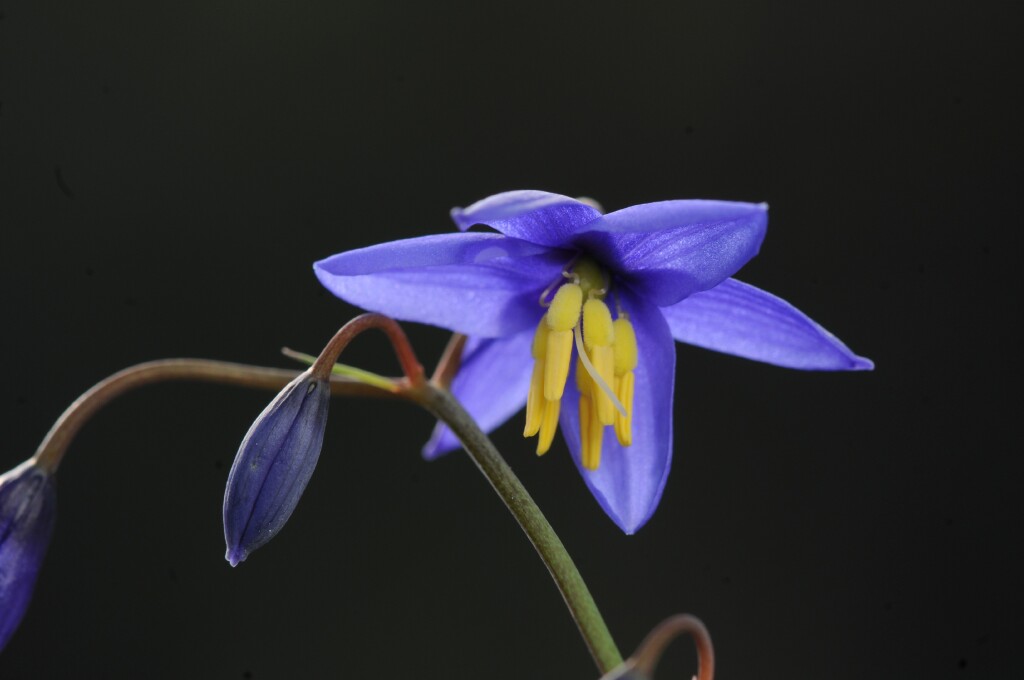Stypandra glauca
R.Br. Nodding Blue LilyPlants narrowly tufted or forming clumps to c. 1 m diam. or more, to c. 1.5 m high. Leaves distichous, sheathing at base, linear, 5–20 cm long, c. 5–15 mm wide. Larger inflorescence branches subtended by broad, leaf-like bracts. Perianth segments narrow-elliptic, 8–16 mm long, blue, white, or occasionally pink, longer than the stamens; capsule ovoid to triquetrous, 3–12 mm long. Seeds several, c. 1.5–3 mm long. Flowers Aug.–Oct.
Wim, VVP, VRiv, MuF, GipP, Gold, CVU, GGr, DunT, NIS, EGL, EGU, WPro, HSF, HNF, Strz, MonT, HFE, VAlp. Also WA, SA, Qld, NSW. Widespread and locally common in dry forests, woodlands and heaths, often in rocky situations.
A number of taxa have been recognized within S. glauca, but there appear to be no unequivocal characters on which to maintain them. Henderson (1987) observed that the WA forms were toxic to livestock, whereas the eastern forms were apparently safe. The species is in need of further study.
Conran, J.G. (1994). Liliaceae. In: Walsh, N.G.; Entwisle, T.J., Flora of Victoria Vol. 2, Ferns and Allied Plants, Conifers and Monocotyledons, pp. 637–686. Inkata Press, Melbourne.
 Spinning
Spinning



